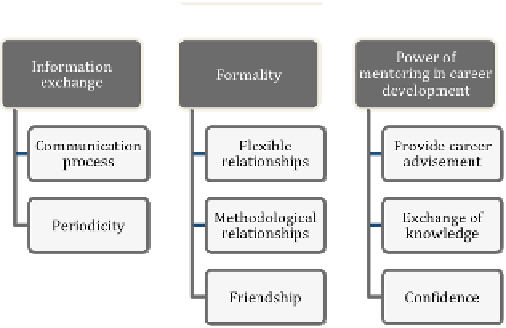Information Technology Reference
In-Depth Information
example, in the information exchange category, the communication process and the
periodicity were considered as sub-categories. Regarding the communication process
sub-category, direct and indirect contacts were defined and identified by the PhD
students (e.g. face-to-face meetings, for the direct contact, and email or video calls for
indirect contact).
Fig. 5.
Tree diagram of the categories and sub-categories defined for the Research Question
dimension
4.2
Findings Discussion
The sample of PhD students involve participant of different ages ranged from 24 to 44
years old (3 with less than 30, 3 between 30 and 40 and remaining with more than
40), 5 of them are female, the majority have an Engineering background and the
others came from areas as Economy, Education and Design. A relevant point is that
the PhD students with age above 30 years have Industrial experience, being two of
them part time students, since they carry out their professional activities in parallel.
Only one came from Brazil. Regarding their personalities, the mainly adjectives used
by them were: ambitious, persistent and leader.
Based on the opinions and perceptions of these PhD students it was possible to
answer to the previously stated research question:
R.Q.: '
How the role of a mentor is perceived in advanced engineering
education
?'
The category Information exchange was firstly analysed. Mentoring relationship
works in its communication process as a mechanism for information exchange and
knowledge gain, similarly to a cost/benefit interaction:
“(…) both mentor and mentee benefit in cooperating with each other.
Mentoring benefits the student due to the guidance that is received. The mentor
is benefited because it has one more orientation and because it has more work
being developed; work that does not require so much effort as if he was







Search WWH ::

Custom Search